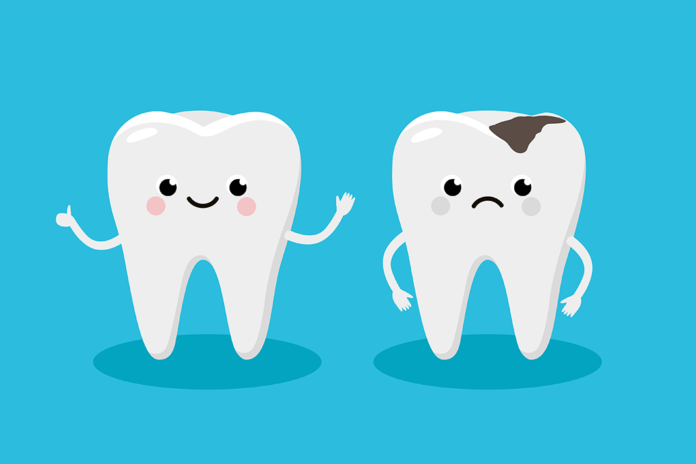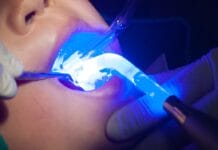
Test Your Cariology Knowledge!
A biofilm-mediated, diet modulated, multifactorial, non-communicable, dynamic disease resulting in net mineral loss of dental hard tissue refers to:
According to the report from a workshop organized by ORCA and Cariology Research Group of IADR, the proper definition and terminology associated with the definition of dental caries is “Dental caries is a biofilm-mediated, diet modulated, multifactorial, non-communicable, dynamic disease resulting in net mineral loss of dental hard tissues [Fejerskov 1997; Pitts et al., 2017]. It is determined by biological, behavioral, psychosocial, and environmental factors. As a consequence of this process, a caries lesion develops.”1
It is important to note that the definition solely pertains to dental caries and not the bacterium that contributes to the disease process. For example, S. mutans are still communicable, as has been determined by multiple studies. In one such study, it was demonstrated that school-age children were a source of horizontal transmission of S. mutans.2 However, the presence of S. mutans alone does not equate to dental caries as it is a multifactorial disease which is why it is considered non-communicable as well.
This workshop aimed to reduce the number of redundant terms used in dentistry directly associated with cariology. The teams began with 222 terms from different countries, 59 terms were reviewed after the removal of duplicate, and unnecessary words of these 17 terms were unanimously decided upon as the term to be used and the definition that should be associated with the word. The goal was to streamline the terminology used across the globe in research, public health, and clinical practice.1
1. Machiulskiene, V., Campus, G., Carvalho, J.C., Dige, I., Ekstrand, K.R., Jablonski-Momeni, A., Maltz, M., Manton, D.J., Martignon, S., Martinez-Mier, E.A., Pitts, N.B., Schulte, A.G., Splieth, C.H., Tenuta, L.M.A., Ferreira Zandona, A., Nyvad, B. Terminology of Dental Caries and Dental Caries Management: Consensus Report of a Workshop Organized by ORCA and Cariology Research Group of IADR. Caries Res. 2020; 54(1): 7-14. doi: 10.1159/000503309. Epub 2019 Oct 7. PMID: 31590168. Retrieved from https://www.karger.com/Article/FullText/503309
2. Baca P, Castillo AM, Liébana MJ, Castillo F, Martín-Platero A, Liébana J. Horizontal transmission of Streptococcus mutans in schoolchildren. Med Oral Patol Oral Cir Bucal. 2012 May 1;17(3):e495-500. doi: 10.4317/medoral.17592. PMID: 22143733; PMCID: PMC3476088. Retrieved from https://pubmed.ncbi.nlm.nih.gov/22143733/
Present treatment strategies for the prevention and treatment of carious lesions include fluorides, adhesive dentistry, and minimally invasive operative approaches. In the future prevention and treatment will include biometric remineralization, biofilm modulation, and tissue engineering.
In the past, dentistry has taken the approach of fixing problems rather than managing the disease that caused the problem in the first place. With advancing knowledge and understanding, this has changed. Currently, dental clinicians strive to prevent and control the disease rather than simply fixing the problems as they arise. The future holds great hope that dental clinicians can build upon this knowledge and implement more minimal intervention approaches for dental disease and prevention. Some of the techniques being investigated for this purpose include biomimetic remineralization of dentin by “attempting to backfill the demineralized dentin collagen with liquid-like amorphous calcium phosphate nano precursor particles that are stabilized by biomimetic analogs of noncollagenous proteins.” Additionally, biofilm modulation via controlling sugar intake and pH level, and tissue engineering.1-3
1. Innes, N.P.T., Chu, C.H., Fontana, M., Lo, E.C.M., Thomson, W.M., Uribe, S., Heiland, M., Jepsen, S., Schwendicke, F. A Century of Change towards Prevention and Minimal Intervention in Cariology. J Dent Res. 2019 Jun; 98(6): 611-617. doi: 10.1177/0022034519837252. PMID: 31107140. Retrieved from https://pubmed.ncbi.nlm.nih.gov/31107140/
2. Niu, L.N., Zhang, W., Pashley, D.H., et al. Biomimetic Remineralization of Dentin. Dent Mater. 2014; 30(1): 77-96. doi:10.1016/j.dental.2013.07.013. Retrieved from https://www.ncbi.nlm.nih.gov/pmc/articles/PMC3867526/
3. Nascimento, M.M. Approaches to Modulate Biofilm Ecology. Dent Clin North Am. 2019; 63(4): 581-594. doi:10.1016/j.cden.2019.07.002. Retrieved from https://www.ncbi.nlm.nih.gov/pmc/articles/PMC6980328/
Sealing non-cavitated carious lesions and cavitated carious lesions extending into the dentin is less mechanically destructive and more protective of the dental pulp than removing the carious lesion.
Studies dating back to the 1980s have shown the benefits and reduced need for invasive treatment using sealants to protect the dental pulp and prevent pulp exposure and its sequelae. “Sealing lesions is less mechanically destructive and more protective of the dental pulp than techniques involving removing all carious tissue (Mertz-Fairhurst et al. 1987; Ricketts et al. 2013). The understanding that bacteria can be sealed (Oong et al. 2008) was the pillar for less invasive carious tissue removal prior to placing a restoration, as cariogenic bacteria and carious tissue were allowed to be left and sealed in proximity to the pulp.”1
1. Innes NPT, Chu CH, Fontana M, Lo ECM, Thomson WM, Uribe S, Heiland M, Jepsen S, Schwendicke F. A Century of Change towards Prevention and Minimal Intervention in Cariology. J Dent Res. 2019 Jun;98(6):611-617. doi: 10.1177/0022034519837252. PMID: 31107140. Retrieved from https://pubmed.ncbi.nlm.nih.gov/31107140/
With evidence strongly supporting the use of minimally invasive procedures for caries prevention and treatment, most dentists in the U.S. are using the updated evidence-based recommendations.
Despite strong evidence to support the use of non-invasive or minimally invasive therapies, a large gap remains between evidence-based recommendations and how dentists apply updated concepts. In the past, dental caries were understood to be “an infectious and transmissible disease,” however, with better understanding and the evolution of new evidence, dental caries is now defined as “a biofilm-mediated, diet modulated, multifactorial, non-communicable, dynamic disease process.” This newer definition of caries requires a newer approach to managing and preventing disease progression and should be guided by evidence.1
1. Fernández, C.E., González-Cabeza,s C., Fontana, M. Minimum Intervention Dentistry in the US: An Update from a Cariology Perspective. Br Dent J. 2020 Oct; 229(7): 483-486. doi: 10.1038/s41415-020-2219-x. PMID: 33037373. Retrieved from https://pubmed.ncbi.nlm.nih.gov/33037373/
Which of the following does not exhibit anticaries potential?
The byproducts of arginine metabolism counteract the effects of biofilm, reduces the acidity from bacterial glycolysis. Fluoride reduces the solubility of enamel by binding to enamel minerals and forming fluorapatite. There is also evidence that fluoride interferes with acid production from bacteria. Xylitol inhibits biofilm formation and possibly interferes with the surface attachment of the biofilm matrix, decreasing the number of viable S. mutans and reducing caries onset and progression. Charcoal exhibits no anticaries potential. Furthermore, even when paired with fluoride in a toothpaste, it does not inhibit S. mutans biofilm growth when compared to fluoride toothpaste without charcoal.1-4
Lastly, charcoal-containing toothpaste has been found to inactivate fluoride, is abrasive, and may contain carcinogens.5
1. Nascimento, M.M. Potential Uses of Arginine in Dentistry. Adv Dent Res. 2018 Feb; 29(1): 98-103. doi: 10.1177/0022034517735294. PMID: 29355411; PMCID: PMC5784480. Retrieved from https://pubmed.ncbi.nlm.nih.gov/29355411/
2. Rosin-Grget, K., Lincir, I. Current Concept on the Anticaries Fluoride Mechanism of the Action. Coll Antropol. 2001 Dec; 25(2): 703-12. PMID: 11811302. Retrieved from https://pubmed.ncbi.nlm.nih.gov/11811302/
3. Loimaranta, V., Mazurel, D., Deng, D., Söderling, E. Xylitol and Erythritol Inhibit Real-time Biofilm Formation of Streptococcus mutans. BMC Microbiol. 2020 Jun 29; 20(1): 184. doi: 10.1186/s12866-020-01867-8. PMID: 32600259; PMCID: PMC7325245. Retrieved from https://pubmed.ncbi.nlm.nih.gov/32600259/
4. Panariello, B.H., Azabi, A.A., Mokeem, L.S., AlMady, F.A., Lippert, F., Hara, A.T., Duarte, S. The Effects of Charcoal Dentifrices on Streptococcus mutans Biofilm Development and Enamel Demineralization. Am J Dent. 2020 Feb; 33(1): 12-16. PMID: 32056409. Retrieved from https://pubmed.ncbi.nlm.nih.gov/32056409/
5. Charcoal Toothpaste: Deactivates Fluoride, Abrasive, and Some May Contain Carcinogens. (2019, June 28). Today’s RDH. Retrieved from https://www.todaysrdh.com/charcoal-toothpaste-deactivates-fluoride-abrasive-and-some-may-contain-carcinogens/
Silver Diamine Fluoride (SDF) has been shown as an effective non-invasive treatment to arrest caries in children. SDF is available in different concentrations; which concentration is recommended for use to arrest caries in children?
A variety of concentrations of SDF have been studied to determine which concentrations the most effective for arresting caries. A systematic review showed concentrations of 30% and 38% were more effective than other concentrations for arresting caries. The 30% concentration had fewer adverse events, such as black staining; however, this level of concentration was less effective in arresting caries than the 38% concentration. Therefore, the overwhelming consensus is to use SDF at a 38% concentration to effectively arrest caries in children.1
1. Contreras, V., Toro, M.J., Elías-Boneta, A.R., Encarnación-Burgos, A. Effectiveness of Silver Diamine Fluoride in Caries Prevention and Arrest: A Systematic Literature Review. Gen Dent. 2017; 65(3): 22-29. Retrieved from https://www.ncbi.nlm.nih.gov/pmc/articles/PMC5535266/
In the past, caries detection relied solely on visual-tactile methods; however, new technology provides other methods for early detection. Which of the following has been proposed as an adjunctive method for early caries detection?
Though these technologies are not recommended to be used on their own, they are providing assistance with early caries detection and monitoring. Visual-tactile methods should always be used, and none of these methods should be used as a justification for invasive treatment.
Fiber-optic transillumination is based on “the phenomenon of light scattering to increase contrast between normal and carious enamel.”
Electrical conductance “employs a single fixed-frequency alternating current, which attempts to measure the ‘bulk resistance’ of the tooth tissue.”
Quantitative Light-induced Fluorescence operates on “the principle of enamel autofluorescence, detecting and quantifying the loss of fluorescence associated with demineralization.”1
1. Gomez, J. Detection and Diagnosis of the Early Caries Lesion. BMC Oral Health. 2015; 15 Suppl 1(Suppl 1): S3. doi:10.1186/1472-6831-15-S1-S3. Retrieved from https://www.ncbi.nlm.nih.gov/pmc/articles/PMC4580848/
Need CE? Get the Complete Today’s RDH On-Demand CE Bundle for One Low Price!













